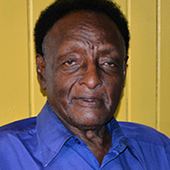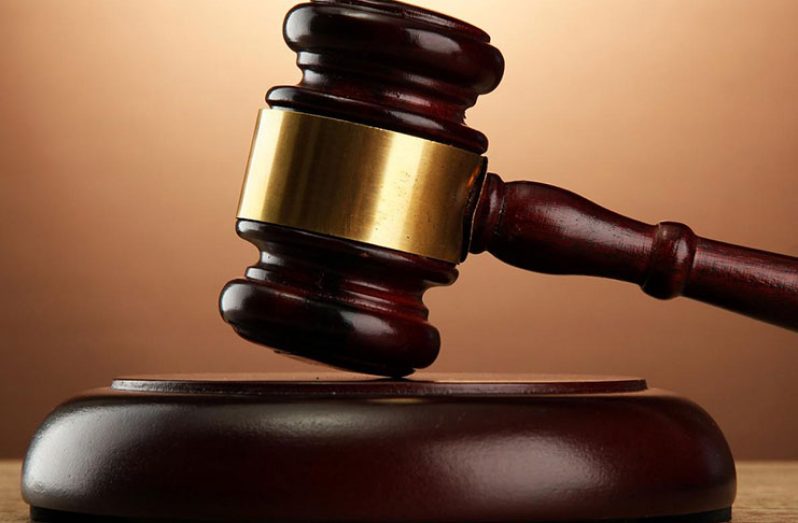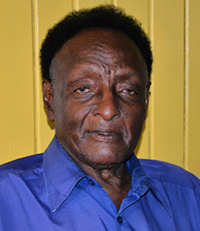IN 1971, weeder Ramkallia of Plantation Versailles who in 1968 was injured on duty, lost her

claim for compensation before a magistrate but won the legal battle before the Full Court.
Ramkallia who claimed compensation from her employers, the respondents, on the ground that she has suffered an injury to her back on the 30th July 1968,when in the course of her employment a heavy box fell and squeezed her as she sharpened her cutlass under her house.
On the medical evidence led the magistrate found against her and dismissed her claim. He held that it was not possible that she could have been suffering from all the complaints testified to by Dr. Hugh as none of the doctors before Dr. Hugh found anything of the kind.
She appealed to the Full Court which was constituted by Chief Justice Harold Bollers and Justice Gonsalves-Sabola .
That Court HELD: (i) the medical evidence was overwhelming that the appellant had not suffered any permanent partial incapacity which she had made the basis of her claim;
(ii) the reasoning of the magistrate was faulty. The language he used showed an unjudicial approach to conflicting expert testimony.
(iii) the magistrate had failed to advert to the question whether there was temporary incapacity proved , and on the evidence of the respondents’ medical witness, Dr. George, the temporary incapacity had not ceased.
(iv) the appeal would be allowed and the respondents would be ordered to pay to the appellant periodic payments at the rate of $40.72 from the 30th July, 1968 until the expiration of a period of five years (less one month’s payment already made) or until the incapacity ceased which ever was the shorter time.
Appeal allowed, Judgment entered for the appellant.
Mr. D.C. Jagan for the appellant.
Mr .G.M. Farnum, S. C. for the respondents.
The Full Court was constituted by Chief Justice Harold Bollers and Justice J. Gonsalves- Sabola.
Chief Justice Bollers who delivered the judgment of the Full Court said in part: This is an appeal from the decision of the Magistrate of the West Demerara Judicial District who dismissed a claim for compensation brought by the appellant, a weeder, on a sugar estate under the Workmen’s Compensation Ordinance, Cap. 111.
The appellant claimed compensation on the ground that she had suffered an injury to her back in an accident arising out of and in the course of her employment. The evidence of the appellant was that she was treated at the dispensary with tablets and electrical appliances and told to return on the following Friday.
On this day she informed Dr. Abbensetts that she was feeling pain and he referred her to Lusignan Hospital. She remained in hospital for 15 days and then was discharged by Dr. Abbensetts who recommended her for light work. Because of the pain she was unable to do the light work . She returned to Dr. Dr. Abbensetts who examined her and referred her to Dr. George. Dr. George, after examination, told her to return to work, but she said she was unable to do so because of pain.
She was later informed by the Personnel Department that Dr. George had discharged her; she still felt pain and on the 10th September 1968, she was examined by Dr. Hugh , a private doctor.
On examination on 10 September 1968, Dr. Hugh found pain on Active and passive movement over the thoracic lumbar spine. In his opinion, the pain was due to a sprained back as a result of compression, on the box falling on her and he recommended six weeks temporary disability.
On October 23, 1968, Dr. Hugh again examined the appellant and found that her condition was not improved and recommended three weeks extension leave .
He saw her again on November 4, 1968 , and on examination found no change in the clinical condition.
Thus he considered her to be a chronic case and assessed her 40 per cent permanent partial disability. The doctor expressed the opinion that her condition was consistent with the accident described, but he found no evidence of tenderness.
Dr. Abbensetts stated that on the July 31, 1968 , the appellant complained to him of pain in the lumbar region i.e. across the lower part of her back and pain in the right hip; she did not complain in the thoracic lumbar region.
On examination he found no external marks of injury and treated her and referred her to Lusignan Hospital and treated her up to 5th August 1968 .
He again examined her on 23rd August 1968, when she complained of pain and after examination in which he could find no physical cause he referred her to a specialist Dr. George .
This doctor saw the patient again on the 26th August, 4th September and 8th September , 1969.
Dr. Abbensetts stated that the appellant complained of pain in the small of the back which would include the lumbar sacral region but he found no muscle spasms.
Dr. Brahman testified that he examined the appellant on the 4th August ,1968, and physical examination revealed no abnormality. He saw no external sign of injury whatever , all movements of her neck, back and spine were full, free and normal, her reflexes were normal and equal.
The only thing seen on the X-ray was a sacralisation of lumba r 5 to the right and early osteoporosis.
Sacralistion is a frequent ungenical abnormality and osteoporosis is the decalcification of the bone which is very common in elderly people ad post menopausal women. She remained in hospital until the 19th of August , 1968, when on examination, he found that she was fully recovered .
Finally, Dr. George the specialist, examined the appellant on the 24th August, 1968 and found there was probably tenderness over the lumbar sacral region, the movements of the spine were normal and there were no muscle spasms.
X-ray revealed no abnormality of the bone, he recommended one week’s light work.
On the 4th of September,1969, this doctor saw the patient for the last time and could find nothing wrong not even tenderness.
Under cross-examination Dr. George stated that the complaint was consistent with the type of injury the patient had suffered and that on the first occasion when he saw her he thought she was incapable of doing her normal duties.
On the second occasion when she complained of pain he diagnosed that she was suffering from low back ache should not be given work which involved bending such as weeding.
On this evidence the Learned Magistrate after a consideration of the evidences of Dr. Hugh stated in his Memorandum of Reasons –
“It is not possible that she could be suffering from all these complaints. It is not possible that she could be suffering from these complaints from the accident as none of the doctors before Dr. Hugh found anything of the kind . I therefore could not accept the evidence of Dr. Hugh and according dismissed the applicant’s claim for compensation”.
Concluding the Full Court’s judgment Chief Justice Bollers added : The medical evidence was over shelming that the appellant had not suffered any permanent partial incapacity which she had made the basis of her claim but we consider that the reasoning of the learned Magistrate here is faulty. Surely it was possible for the minority opinion of Dr. Hugh to be judicially acceptable in the face of all the other contrary medical evidence , especially having regard to Dr. George’s diagnosis of low back ache and his evidence that a person suffering from low back ache should not be given work which involved bending such as weeding . It cannot be assumed that the learned Magistrate, made the correct approach to the medical evidence b ut unfortunatelynexpressed his finding in infelicitous language.
The language he used unambiguously shows an unjudicial approach to conflicting expert testimony.
But assuming that the learned magistrate was right to find that on the evidence before him the appellant had not suffered any permanent partial nincapacity which she made the basis of her claim, there remained, however, the question of periodic payments, and it was the submission of counsel for the appellant that the periodic payments could not be brought to an end by the respondents until they had compiled with the provisions of s. 12 of the Ordinance .
For the reasons submitted the appeal was allowed and the order of the Magistrate set aside.
Judgment was entered in favour of theappellant and the respondents nwere ordweered to paynto the apellantnnperiodic payments at the rarte of $40.72 from the 30th July, 1968, until the expiration of a period of five (5) years (less one month’s payment already made) or until the incapacity has ceased whichever be the shorter time.
Costs to the appellant




.jpg)









